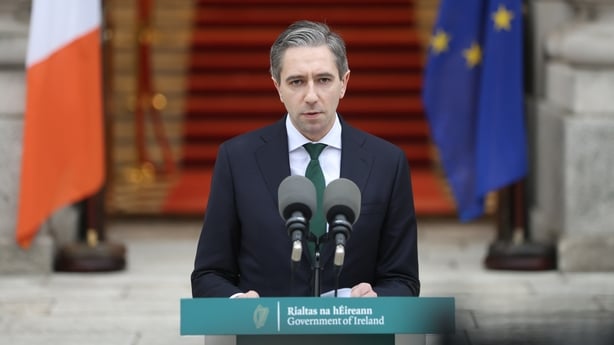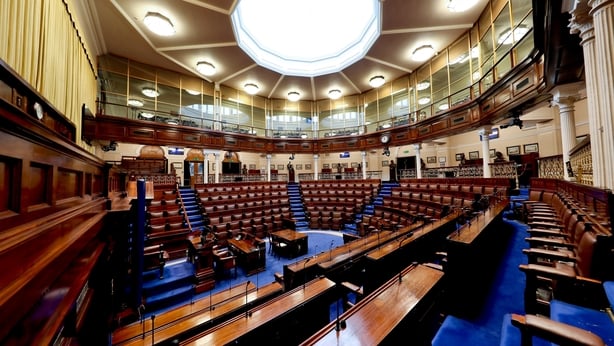Never mind the question "who are you voting for?" For some people, the far more practical question right now is what constituency am I in, and why has this changed since last time around?
While general elections normally lead to the possibility of changes, the big difference for General Election 2024 is that at least some of them are already guaranteed due to legally required constituency alterations and a rise in the number of TDs.
In total, there are four new constituencies compared to the General Election 2020 in addition to 14 more Dáil seats, a situation necessitated by legal requirements on how many people one TD should represent.
This all means that while in 2020 there were 39 constituencies and 160 Dáil seats, this year's General Election will see politicians in 43 constituencies fight over 174 seats in Dáil Éireann.
So, why exactly has this happened, what are the local changes, how does this affect the number of Dáil seats, and that big - and, let's face it, rather practical - question you should probably double check before 29 November: what constituency am I in?
Why have constituency changes?
Let's start at the beginning - why are there any changes at all?
The Constitution, basically.
Article 16.2.2 of the Constitution of Ireland, Bunreacht na hÉireann, decides on your right to representation in Dáil Éireann, and says one TD should speak on behalf of between 20,000 and 30,000 people.
As such, Dáil constituencies are updated depending on changes to how many people are living in a particular area - official figures which are confirmed by the Census every five years.
After the 2022 Census, a new law called the Electoral Reform Act 2022 was passed by the Oireachtas, establishing An Coimisiún Toghcháin, the Electoral Commission, to examine the issue.
Due to the increasing population and the Constitutional requirements outlined above, the Act said An Coimisiún should decide to increase the number of Dáil seats from 160 to between 171 and 181, and that each Dáil constituency should be represented by between three and five TDs.
The following year, An Coimisiún Toghcháin produced the 2023 Dáil Constituency Review, which outlined the changes for General Election 2024.
These are based on the fact that Census 2022 said Ireland's population was 5.149 million people, and that if no changes were made then each TD would represent 32,182 people compared to representing 29,593 people as a result of the General Election 2024 changes.

Which constituencies are new?
The Dáil Constituency Review 2023 said the number of General Election 2024 constituencies should increase from 39 to 43.
This includes the removal of three constituencies - Laois-Offaly, Dublin Fingal and Tipperary - and they are being replaced with six newly created constituencies, a number of which had existed previously.
These changes were:
- The splitting of Laois-Offaly into two separate Laois and Offaly constituencies.
- The splitting of Dublin Fingal into Dublin Fingal West and Dublin Fingal East.
- And the splitting of Tipperary into the Tipperary North and Tipperary South constituencies.
A seventh new constituency, Wicklow-Wexford, has also been formed, meaning that overall there are four more constituencies in the General Election 2024 than there were in 2020.
Which other constituencies are being changed?
The majority of the rest of the constituencies have also been changed to some degree, with some areas added from neighbouring constituencies and some taken away, a situation that has at times led to varied local reaction. They include:
- Carlow-Kilkenny having some areas transferred to Tipperary North
- Cavan-Monaghan having some areas transferred to Meath East
- Cork East having some areas transferred to Cork North Central and Cork North West
- Cork North Central having some areas transferred to Cork South Central and Cork North
West, and others brought in from Cork North West and Cork East and vice versa - Dublin Bay North having some areas transferred to Dublin North West and others brought in from the now split Dublin Fingal constituency
- Dublin Bay South having some areas transferred to Dublin South Central
- Dublin Mid-West having some areas brought in from Dublin South West and Dublin South Central
- Dublin North West having some areas transferred to Dublin West and the new Dublin Fingal West constituency, and others brought in from Dublin Bay North
- Dublin South Central having some areas transferred to Dublin South West and Dublin Mid-West, and others brought in from Dublin Bay South
- Dublin South West having some areas transferred to Dublin Mid-West and others brought in from Dublin South Central
- Dublin West having some areas brought in from Dublin North West
- Dublin-Rathdown having some areas brought in from Dun Laoghaire
- Dun Laoghaire having some areas transferred to Dublin-Rathdown
- Galway East having some areas brought in from Roscommon Galway
- Galway West having some areas transferred to Mayo
- Kildare North having some areas brought in from Kildare South
- Kildare South having some areas transferred to Kildare North, as well as the new Laois and Offaly constituencies
- Limerick City having some areas transferred to the new Tipperary North constituency
- Longford Westmeath having some areas brought in from Meath West
- Louth having some areas transferred to Meath East
- Mayo having some areas brought in from Galway West
- Meath East having some areas brought in from Cavan-Monaghan as well as Louth
- Meath West having some areas transferred to Longford-Westmeath
- Roscommon Galway having some areas transferred to Galway East and others brought in from Sligo-Leitrim
- Sligo-Leitrim having some areas transferred to Roscommon Galway
- Wexford having some areas transferred to the new Wicklow-Wexford constituency
- Wicklow having some areas transferred to the new Wicklow-Wexford constituency
Which constituencies have not changed since the General Election 2020?
A number of constituencies, seven in all, do however remain unchanged. They are Clare, Cork South West, Donegal, Dublin Central, Kerry, Limerick County and Waterford.
A full breakdown of each constituency area can be found in the RTE News constituency profiles section.
Maps and profiles: Your interactive constituency guide
How does all of this affect Dáil seat numbers?
In addition to area changes, for people in some constituencies there will also be changes to the number of seats.
Overall, the number of TDs will rise from 160 in the current Dáil to 174 after the General Election 2024.
The number of three seat constituencies increases from nine to 13; the number of four seat constituencies reduces from 17 to 15; and the number of five seat constituencies increases from 13 to 15.

Among the new constituencies the former Laois-Offaly five seat constituency is being replaced by separate constituencies Laois (three seats) and Offaly (three seats).
The former Dublin Fingal five seat constituency is also being replaced by separate constituencies Dublin Fingal West (three seats) and Dublin Fingal East (three seats), while the former Tipperary five seat constituency is being replaced by the separate constituencies of Tipperary North (three seats) and Tipperary South (three seats).
In addition, a new three seat Wicklow-Wexford constituency has also been created.
Among existing constituencies, the following will have changes to the number of Dáil seats available:
Cork South Central - one extra seat
Cork North Central - one extra seat
Dublin Mid-West - one extra seat
Dublin-Rathdown - one extra seat
Dublin West - one extra seat
Galway East - one extra seat
Kildare North - one extra seat
Longford-Westmeath - one extra seat
Meath East - one extra seat
Mayo - one extra seat
Wexford - loses one seat
Wicklow - loses one seat
Just to be clear, are all of these changes transparent and made by independent people rather than the government?
In one word, yes.
An Coimisiún Toghcháin is independent from Government, political parties and the political system, and all of its relevant documents referenced above are readily accessible online.
Misinformation and disinformation may be of growing concern in the online world, but black and white facts from trusted sources that can be independently verified are still the gold standard when it comes to any discussion.
An important message to keep in mind, not just on this topic but during the entire General Election 2024 campaign too.
So, remind me, what constituency am I in?
If you are still confused, don't worry.
An Coimisiún Toghcháin, The Electoral Commission, has outlined all of the constituency boundary changes on its website www.electoralcommission.ie/constituency-review
And here in RTÉ News, we've also profiled every general election constituency, so you the voter will know who's likely to knock on your door seeking your vote over the coming days and weeks.







